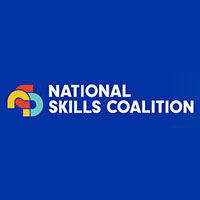Newsroom
Related Reading










Social Feed

In 2020, Futuro Health launched one of its first major programs, our Medical Assisting Program.
In 2021, a Futuro Health Scholar became the first graduate of this program, and today, over 2,788 Scholars have graduated from our MA program since its launch! www.futurohealth.org
#5YearsOfFuturoHealth #futurohealth

In 2020, Futuro Health launched one of its first major programs, our Medical Assisting Program.
In 2021, a Futuro Health Scholar became the first graduate of this program, and today, over 2,788 Scholars have graduated from our MA program since its launch! www.futurohealth.org
#5YearsOfFuturoHealth #futurohealth
…

Ready to begin a career in healthcare? Scholarships are available! If you are selected, you could attend for no or low cost. Since our launch in 2020, we have enrolled over 16,422 adults into healthcare career programs and courses. Visit futurohealth.org for more information.
#futurohealth #futurohealthscholar #healthcare
… See MoreSee Less
- likes 3
- Comments: 0
- Shares: 0
0 CommentsComment on Facebook
Keep up with the latest news from Futuro Health by subscribing to our eConnection.
